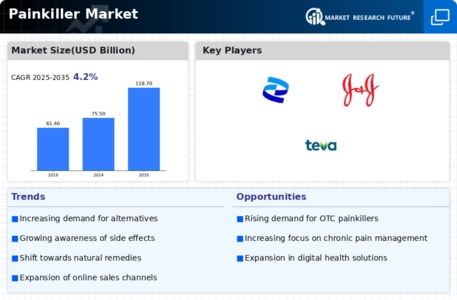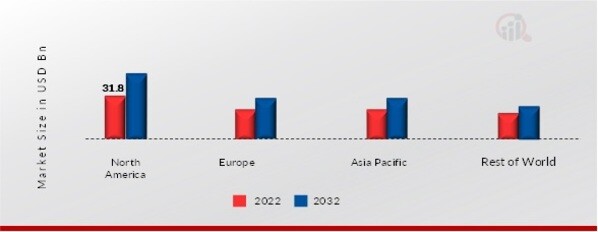Market Growth Projections
The Global Painkiller Market Industry is poised for substantial growth, with projections indicating a market value of 75.5 USD Billion in 2024, potentially reaching 118.7 USD Billion by 2035. This growth trajectory suggests a compound annual growth rate of 4.2% from 2025 to 2035, driven by various factors including an aging population, increased prevalence of chronic pain conditions, and advancements in pharmaceutical research. The market's expansion reflects a broader recognition of the importance of effective pain management in enhancing quality of life, prompting ongoing investment and innovation within the industry.
Growing Incidence of Chronic Diseases
The rising incidence of chronic diseases globally is a significant driver of the Global Painkiller Market Industry. Conditions such as arthritis, diabetes, and cancer often lead to persistent pain, necessitating effective pain management solutions. As the global population ages, the prevalence of these chronic conditions is expected to increase, thereby elevating the demand for pain relief medications. This trend is reflected in the market's projected compound annual growth rate of 4.2% from 2025 to 2035. Consequently, pharmaceutical companies are focusing on developing targeted therapies that address the specific pain profiles associated with these diseases, further propelling market growth.
Increased Awareness of Pain Management
There is a growing awareness of pain management among healthcare professionals and patients, which positively impacts the Global Painkiller Market Industry. Educational initiatives and campaigns aimed at highlighting the importance of addressing pain effectively have led to increased consultations and prescriptions for pain relief medications. This heightened awareness is particularly evident in emerging markets, where healthcare access is improving. As patients become more informed about their treatment options, the demand for painkillers is likely to rise. This trend is expected to contribute to the market's projected growth, with estimates suggesting a value of 118.7 USD Billion by 2035.
Advancements in Pharmaceutical Research
Innovations in pharmaceutical research significantly contribute to the expansion of the Global Painkiller Market Industry. The development of new analgesics and combination therapies offers patients more effective and safer options for pain relief. For instance, recent advancements in drug delivery systems enhance the efficacy of existing pain medications, while novel compounds are being explored to target specific pain pathways. These advancements not only improve patient outcomes but also stimulate market growth as healthcare providers adopt these new therapies. The ongoing research efforts indicate a robust pipeline of products that could further transform pain management practices in the coming years.
Regulatory Support for Pain Management Products
Regulatory bodies play a crucial role in shaping the Global Painkiller Market Industry by facilitating the approval and availability of pain management products. Streamlined approval processes for new medications and generics enhance market accessibility, allowing patients to benefit from a wider range of pain relief options. Additionally, regulatory support for over-the-counter painkillers encourages self-medication for mild to moderate pain, further driving market growth. As regulations evolve to accommodate new therapeutic approaches, the industry is likely to see an influx of innovative products that meet the diverse needs of patients, thereby sustaining market momentum.
Rising Global Demand for Pain Management Solutions
The Global Painkiller Market Industry experiences a notable increase in demand as populations age and chronic pain conditions become more prevalent. In 2024, the market is valued at approximately 75.5 USD Billion, reflecting a growing recognition of the need for effective pain management strategies. This trend is particularly pronounced in developed regions where healthcare systems are increasingly focused on improving quality of life for patients suffering from chronic pain. As a result, pharmaceutical companies are investing heavily in research and development to create innovative pain relief solutions, thereby driving market growth and expanding the range of available products.





